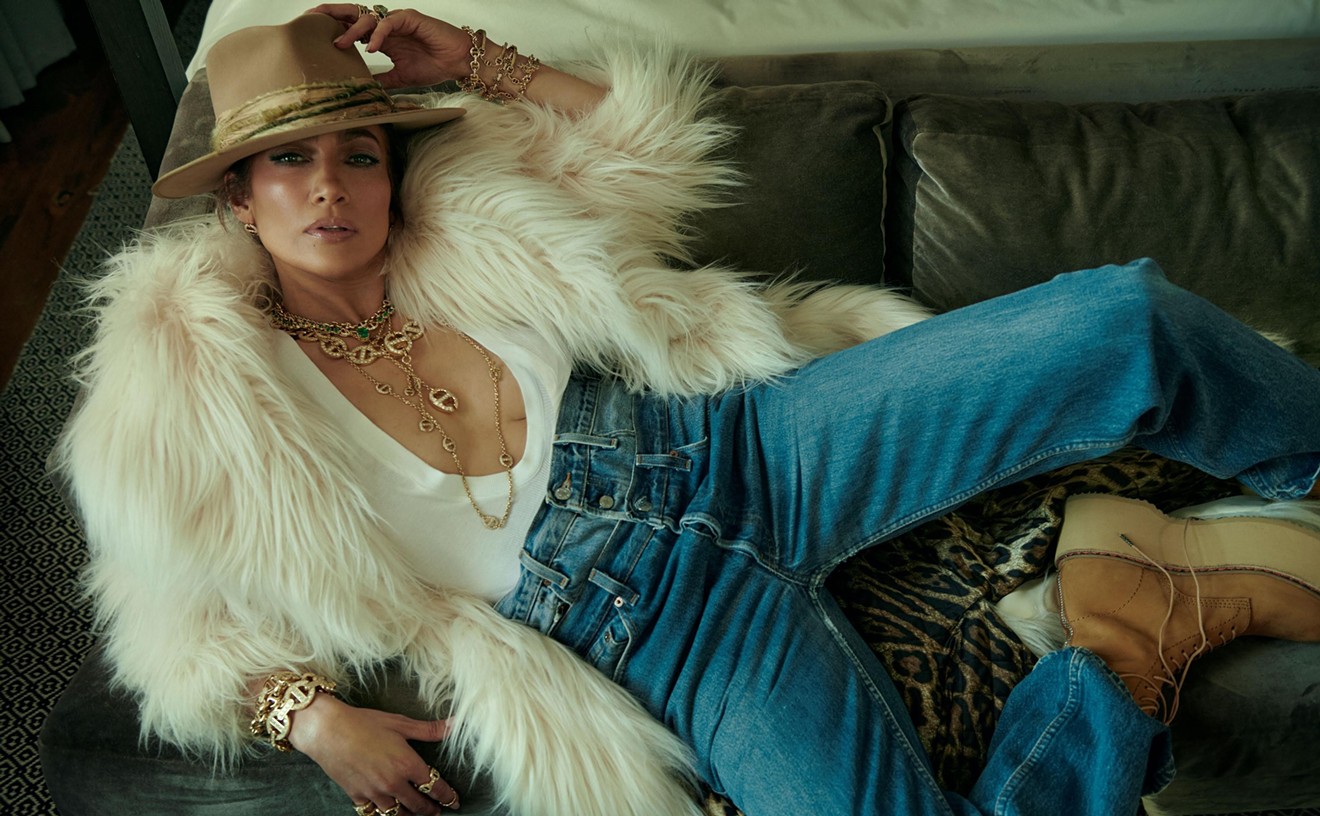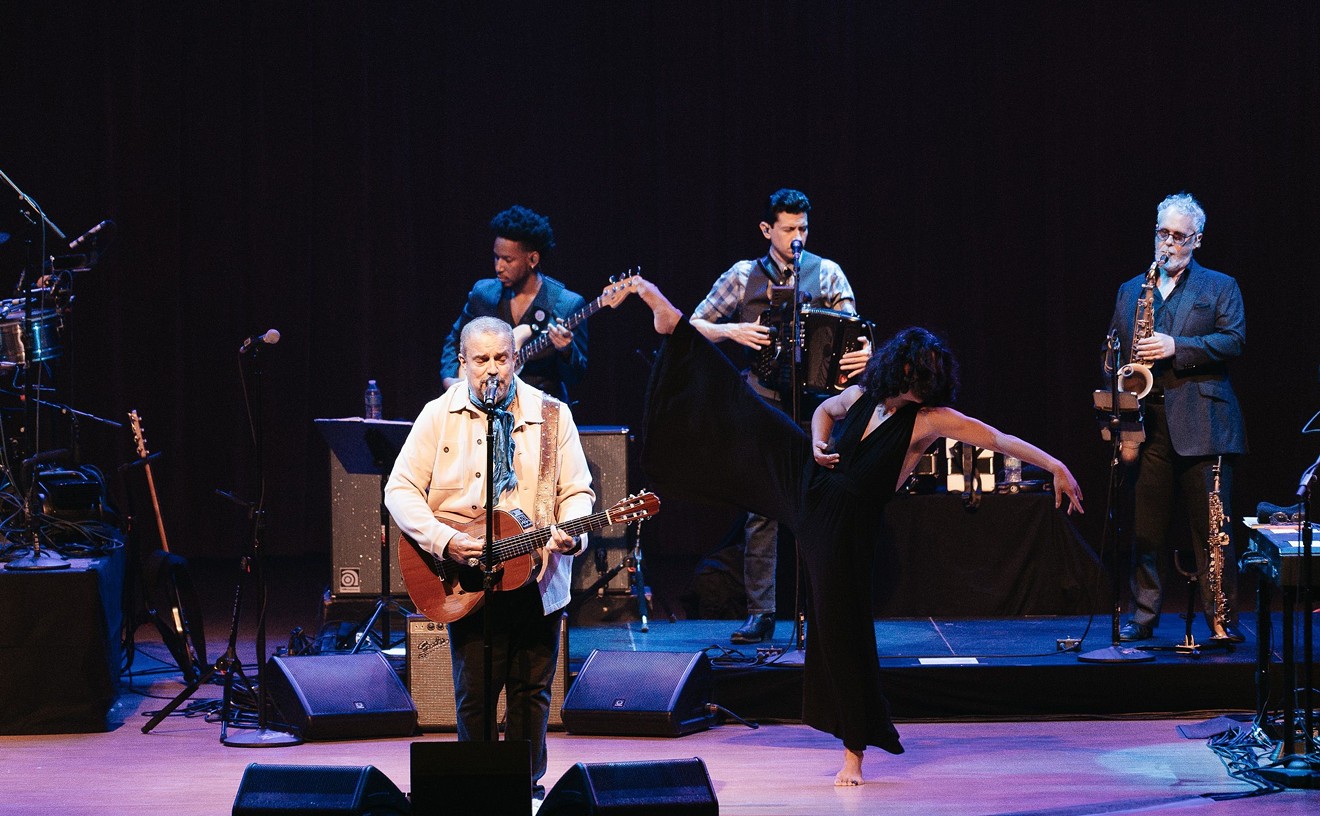The setting was Orlando at the peak of the '90s rave scene. Underground dance culture was arguably at its best, and inside the famed club Edge, the electro group known as Rabbit in the Moon consistently concocted an auditory and visual experience unlike anything most dance fans had ever experienced.
Although electronic music was splitting into different genres, RITM's music ignored the trends, instead painting an audible picture of global electronica as a whole. With an already established sound, the group began titillating audience members' other senses. On stage, fire dancers swaying to low-tempo rhythms became the norm. Video screens lined the background of their sets, and performance artistry with extravagant costumes guided the audience through their music.
With those euphoric live shows, Rabbit in the Moon, much like the Grateful Dead, incited mass interest across the country without any television coverage or big record-label releases. Their dedicated fan base grew to the tens of thousands before media outlets even started paying them attention.
"I think at the time, mainstream press was trying to catch on to what had been going on with the rave scene," says David "Confucius" Christophere, one of the group's DJs. "So when they started trying to find out what was happening, they kept hearing about us, and they were like, this is the biggest band we've never heard of, because we were playing shows to 10,000 people. It was fascinating to them."
But more than ten years later, with the same act, some new music, and an upcoming show in Fort Lauderdale, does Rabbit in the Moon still have what it takes to turn on local dance audiences?
Some club followers argue that their shows have grown increasingly stale recently.
"I think they need to change their stuff up a little bit," says longtime local fan Adrianna Jolei of Miami, whose last Rabbit in the Moon show was at the 2006 Sunset Music Festival in St. Petersburg. "Their music is that old-school raver stuff I love. But performance-wise, it's been the same stuff for years."
On the other hand, Mihai Crisan, founder of Contagious Musiq, who has worked with Rabbit in the Moon for nearly four years, feels differently.
"I think they're the most entertaining electronic group that there is, even when it comes down to Prodigy," Crisan says. "At Ultra Music festival this year, there were like 25 people on stage, and they featured three new costumes. The thing is, you have to keep certain things kind of consistent, but at the same time, they introduce you to their new music and new material that they've prepared."
Aside from the he said, she said, Christophere promises that for this year's Freedom Fest, both old-school and new-school crowds should be amazed.
"There's going to be musical surprises," Christophere continues, "and a special set for the show."
Why are expectations for Rabbit in the Moon gigs so high?
Back at the dawn of the rave movement, circa 1991, Christophere and his then-partner, Steve McClure, AKA DJ Monk, were seen as Florida's poster boys for electronica. They were the kings of mixing trippy theatrics with electronic beats and creating performances that (even if you weren't on all the right drugs) practically seemed out of this world. For awhile, RITM worked as a trio, adding Steve "Bunny" Eachon, the group's performance artist, into the fold in 1993. Over the years, Eachon developed a series of costumes (a rabbit, a muscle suit with an iron mask and electric saw, a suit with spikes resembling something from Tim Burton's Beetlejuice) that helped the band's lore grow.
As for the group's wacky name, Christophere says it's related to Aztec myth (with a little I-Ching rolled in).
"It has to do with yin and yang," Christophere says. "Two sons rose in the sky, and one of the sons wasn't happy with the way the other son was running things, so he grabbed at a rabbit and threw it at the sun, which became the moon."
This ideology gives way to the group's approach toward its music.
"It's not about one thing or one style," Christophere continues. "It was the idea that you can't have light without darkness. I thought limiting myself to one style of beat would make what I was doing sound redundant."
Their live beats range from house to tribal to drum 'n' bass, and their recorded music is just as varied.
For example, "Waiting for the Night," a Depeche Mode remix, begins with ambient sounds and vocals, then picks up the pace with drum and bass beats. Yet "Out of Body Experience," a song that first appeared on the Urbal Beats Volume 1 compilation CD, abides more closely to the rules of house music.
After years of building a niche in the industry with their philosophical approach to music — and after losing DJ Monk, who walked away from the group in 2000 — RITM finally released its first full-length CD/DVD, Decade, last year. The album peaked on the Billboard charts at number 12.
"We promised people during the millennium that we were going to release a record," Christophere says of the long delay. "It wasn't that we didn't want to do that; we just weren't comfortable with the climate of putting out a record in an environment where it wouldn't get distributed right." He's referring to the surge of downloadable music in the late '90s.
But once the guys moved to Los Angeles three years ago, they felt it was time. They created the album to match their shows, using the DVD to tell a story through music.
"It was purging the past, because we had fans that wanted to hear our old stuff," Christophere says. "It was our way of saying, here is the stuff you've always wanted along with a glimpse of the future."
The future was L.A., where they are currently working on a second record, possibly a double album, with lots of new music. Various other projects loom ahead for the group as well. For one, Christophere says he recently finished production work for Gingger Shankar, granddaughter of legendary Indian composer, Ravi Shankar.
"One of our dreams being out in L.A. was to get more involved and work on things like movie soundtracks," Christophere says. "Bringing Rabbit in the Moon to L.A. was to create other opportunities for us to do all kinds of stuff."
Florida, though, is still deep in their hearts.
"The Florida crowd are home to us," he says. "They evolved with us. Fort Lauderdale, Miami, Orlando, Tampa, Jacksonville, all those places are really fun for us to play."










